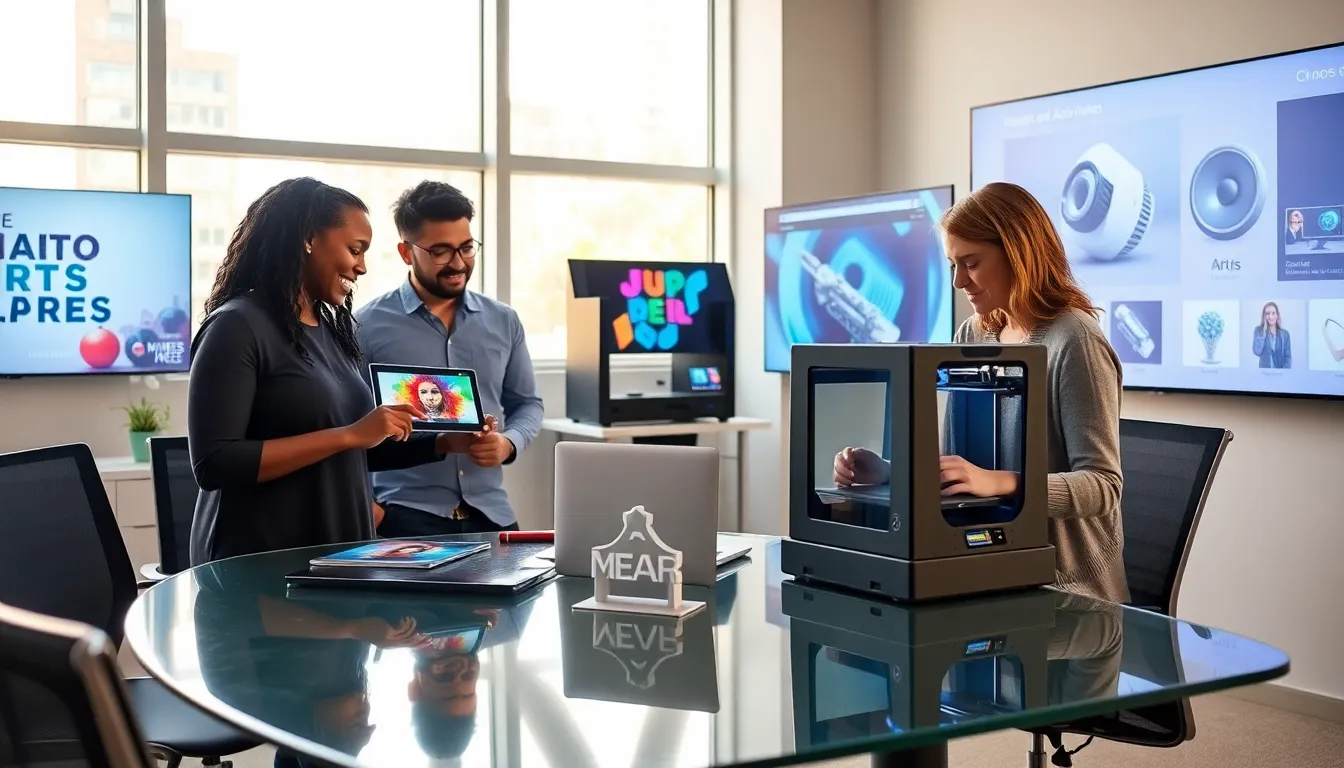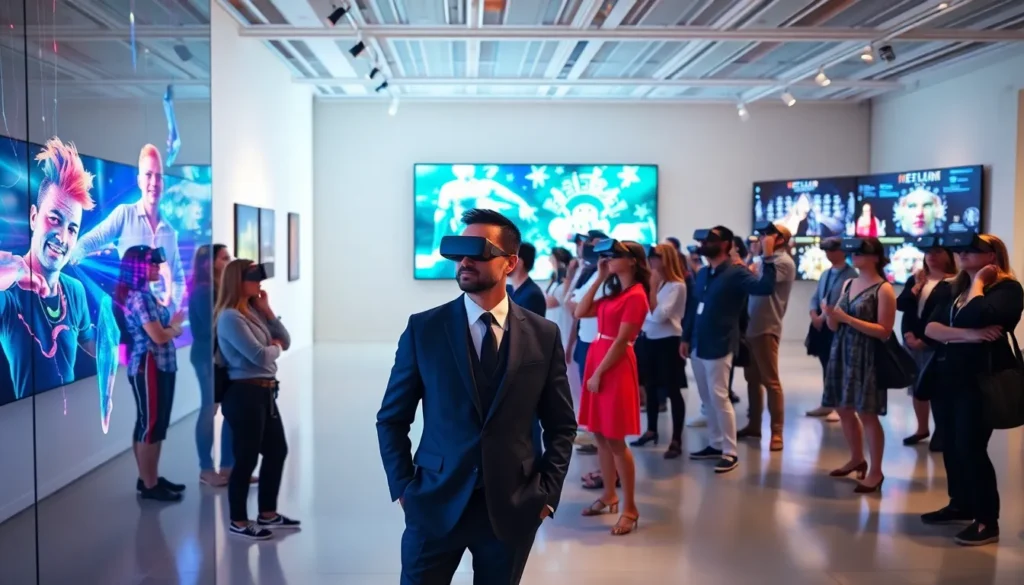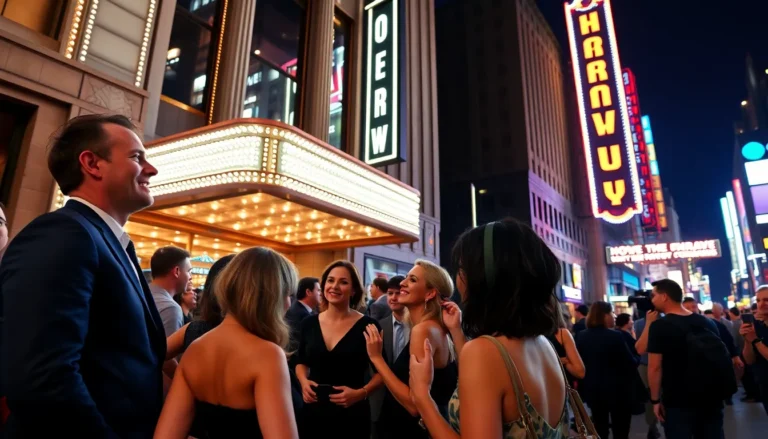Imagine walking through a gallery where art isn’t just a passive experience, but an interactive sensory journey that engages every sense. This is not some sci-fi fantasy: it’s the reality shaped by audio/video technology in the arts. From dazzling digital displays to stunning soundscapes, the evolution of this technology has transformed artistic expression in profound ways. In this text, we’ll explore how digital media impacts various art forms, the increasing importance of communications, the challenges ahead, and the trends redefining creativity as we know it. Buckle up, because the world of arts technology is anything but dull.
Table of Contents
ToggleThe Evolution of Audio/Video Technology in the Arts

The evolution of audio and video technologies in the arts is nothing short of revolutionary. Gone are the days of static paintings and one-dimensional performances. Today, artists use a variety of technologies to create immersive experiences that engage audiences in novel ways.
Impact of Digital Media on Art Forms
Digital media has undeniably reshaped how art is conceived, created, and consumed. Artists now leverage software tools and applications to craft digital installations, combining visual and audio elements that can be experienced through various platforms. This transformation allows for interactive art, where the viewer becomes an integral part of the artwork. For instance, artists like Rafael Lozano-Hemmer use algorithms and public participation to create works that evolve in real time, showcasing how digital media encourages an ongoing dialogue between the artist and the audience.
Emerging Technologies Shaping the Arts
Emerging technologies such as augmented reality (AR), 3D printing, and AI continue to open new avenues for creativity. Artists can now project virtual elements into physical spaces, allowing for a unique fusion of reality and imagination. These technologies bring depth, dimension, and a new layer of engagement to traditional art forms, and they provide artists with tools to push their boundaries. Imagine a sculpture that reacts to its environment, shifting and changing based on who is viewing it. With each passing day, the ways artists can express themselves multiply.
The Role of Communications in Artistic Expression
Communications are central to art’s evolution, not merely as a means of distribution, but as a fundamental part of the artistic expression process.
Collaborative Platforms for Artists
In recent years, collaborative platforms have emerged that enable artists to work together across distances, merging their unique styles and mediums. Tools like Discord and Zoom have transformed how creators collaborate, breaking geographical barriers and facilitating global teamwork. Artists can share ideas, resources, and feedback instantaneously, leading to the birth of new projects that might never have existed. The result is a melting pot of creativity that challenges traditional notions of authorship and collaboration.
Social Media’s Influence on Art Distribution
Social media plays a pivotal role in how art reaches the audience. With platforms like Instagram and TikTok, artists can showcase their work to millions, gaining visibility that would have once required a gallery showing. But, this democratization comes with its challenges. While artists can directly engage with their audience, they face the pressure of constantly producing content, sometimes at the expense of their artistry. The positive side? It enables them to build communities and dialogues around their work, making art accessible and interactive.
Challenges in Audio/Video Communication for Arts
Even though the myriad advancements in audio and video technology, several challenges remain.
Technological Barriers and Accessibility
Technological barriers often limit accessibility for both artists and audiences. Not every artist has access to cutting-edge tools or high-speed internet. Similarly, engaging with high-quality audio/video experiences can be a privilege that not everyone can afford. This digital divide risks excluding talented creators who may have something profound to share. Traveling exhibitions or communities with poor internet infrastructure could be left in the dark, missing out on transformative opportunities to interact with art.
Maintaining Artistic Integrity in the Digital Age
In the rush to adapt to new technologies, maintaining artistic integrity has become a critical concern. The pressure to conform to trends can overshadow genuine creativity, pushing artists to create for virality rather than authenticity. The fine line between artistic expression and commercial appeal can lead to compromises that dilute the artist’s original vision. Striking a balance between leveraging technology and staying true to one’s artistic self is a challenge many face.
Future Trends in Arts Audio/Video Technology
Looking ahead, several trends are poised to shape the landscape of arts audio and video technology.
Artificial Intelligence and the Creative Process
Artificial intelligence is increasingly being integrated into artistic processes. From AI-generated music to art created by algorithms, the role of AI as a collaborator rather than just a tool is expanding. This dynamic raises intriguing questions about authorship and creativity. Will an AI-created piece hold the same value as one made by a human? As artists embrace these tools, new forms of artistic expression will likely emerge, challenging conventional definitions of art.
Virtual Reality and Immersive Experiences
Virtual reality (VR) is set to revolutionize how audiences interact with art. Imagine stepping into a painting or exploring an artist’s mind through an immersive VR experience. This technology blurs the lines between creator and audience, creating opportunities for intense emotional connections and engagement. Such experiences are more than mere observation: they’re participatory journeys that allow viewers to play active roles in the narrative of the artwork.





